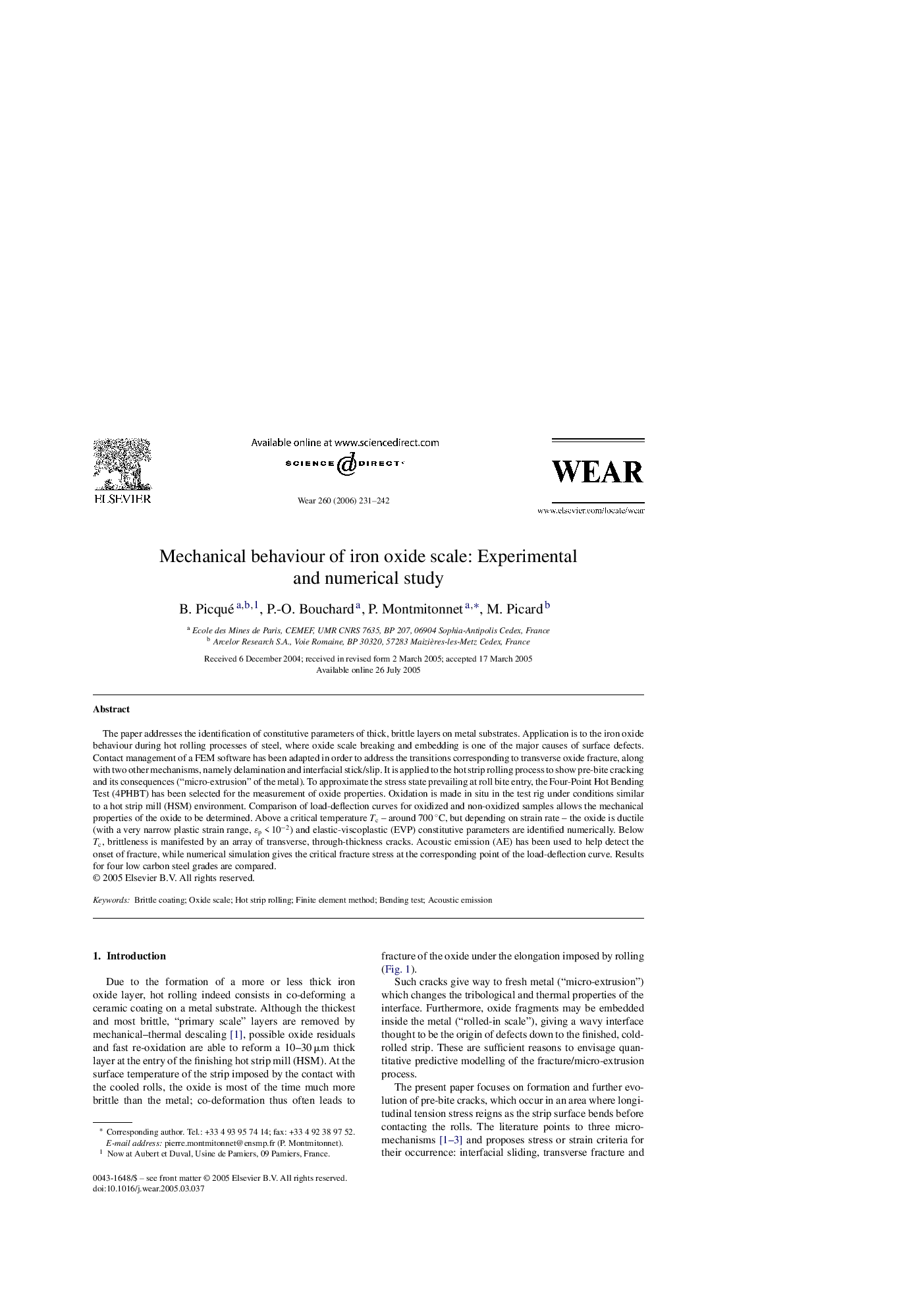| Article ID | Journal | Published Year | Pages | File Type |
|---|---|---|---|---|
| 619927 | Wear | 2006 | 12 Pages |
The paper addresses the identification of constitutive parameters of thick, brittle layers on metal substrates. Application is to the iron oxide behaviour during hot rolling processes of steel, where oxide scale breaking and embedding is one of the major causes of surface defects. Contact management of a FEM software has been adapted in order to address the transitions corresponding to transverse oxide fracture, along with two other mechanisms, namely delamination and interfacial stick/slip. It is applied to the hot strip rolling process to show pre-bite cracking and its consequences (“micro-extrusion” of the metal). To approximate the stress state prevailing at roll bite entry, the Four-Point Hot Bending Test (4PHBT) has been selected for the measurement of oxide properties. Oxidation is made in situ in the test rig under conditions similar to a hot strip mill (HSM) environment. Comparison of load-deflection curves for oxidized and non-oxidized samples allows the mechanical properties of the oxide to be determined. Above a critical temperature Tc – around 700 °C, but depending on strain rate – the oxide is ductile (with a very narrow plastic strain range, ɛp < 10−2) and elastic-viscoplastic (EVP) constitutive parameters are identified numerically. Below Tc, brittleness is manifested by an array of transverse, through-thickness cracks. Acoustic emission (AE) has been used to help detect the onset of fracture, while numerical simulation gives the critical fracture stress at the corresponding point of the load-deflection curve. Results for four low carbon steel grades are compared.
